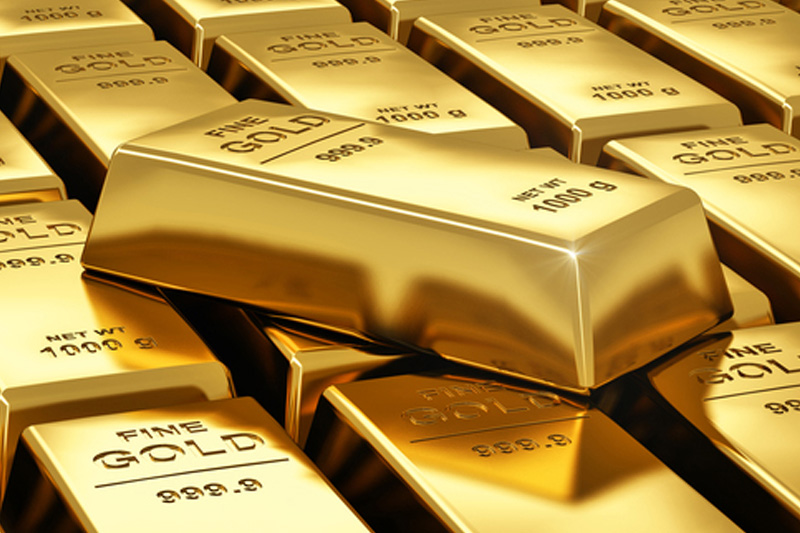Investing.com -- Gold soared nearly 2% to hit 22-month highs, as the Bank of Japan and Bank of England followed the lead of the Federal Reserve by standing pat at a pair of closely-watched central bank meetings on Thursday.
On the Comex division of the New York Mercantile Exchange, Gold for August delivery traded in a broad range between $1,294.00 and $1,318.85 an ounce before settling at $1,305.25, up 16.95 or 1.32% on the session. Gold has closed higher in seven straight and nine of the last 10 sessions. Since briefly dipping below the $1,200 level at the end of last month, gold has rallied more than 8%. The precious metal has also surged more than 23% since the start of the year and is on pace for its strongest first half in more than a decade.
Gold likely gained support at $1,199.00, the low from May 31 and was met with resistance at $1,337.90, the high from July 11, 2014.
As investors continued to digest a relatively dovish monetary policy statement from the Federal Reserve, the Bank of Japan and Bank of England followed suit by holding interest rates steady at monthly monetary policy meetings on Thursday. The BOJ, as expected, left its benchmark interest rate unchanged despite a surging yen and sluggish inflation. Following the decision, the yen jumped against the dollar, hitting a fresh 22-month high at 103.58. Yields on the Japan 10-Year also continued its prolonged swoon, touching down to an all-time record-low of Minus-0.21%.
Soon after, the Bank of England (BOE) maintained its bank rate at 0.5% and the level of purchased assets financed by the issuance of central bank reserves at £375 billion. Notably, the BOE issued stark warnings on the ramifications that could ensue from a "Leave," vote in next week's controversial Brexit referendum.
"The outcome of the referendum continues to be the largest immediate risk facing UK financial markets, and possibly also global financial markets," the Bank of England said in a statement. "While consumer spending has been solid, there is growing evidence that uncertainty about the referendum is leading to delays to major economic decisions that are costly to reverse, including commercial and residential real estate transactions, car purchases, and business investment."
On Wednesday, the Federal Open Market Committee (FOMC) left the target range on its benchmark Federal Funds Rate unchanged at a level between 0.25% and 0.50%. It marked the fourth consecutive meeting the FOMC held short-term interest rates steady. The FOMC left its 2016 rate outlook unchanged at 0.9%, while downgrading its forecast for each of the next two years. In addition, six members of the FOMC recommended one interest rate hike before the end of this year, up from one in March. By comparison, the FOMC estimated that it would raise interest rates four times this year in its long-term forecasts last December.
Investors who are bullish on Gold are in favor of a gradual tightening of monetary policy by the Fed. Gold, which is not attached to interest rates, struggles to compete with high-yield bearing assets in rising rate environments.
The U.S. Dollar Index, which measures the strength of the greenback versus a basket of six other major currencies, soared to an intraday-high of 95.53, before falling back to 94.90, up 0.25% on the session. The index is down by more than 5% since early-December. Dollar-denominated commodities such as gold become more expensive for foreign purchasers when the dollar appreciates.
Silver for July delivery gained 0.177 or 1.01% to $17.680 an ounce.
Copper for July delivery plunged 0.044 or 2.10% to $2.047 a pound.
